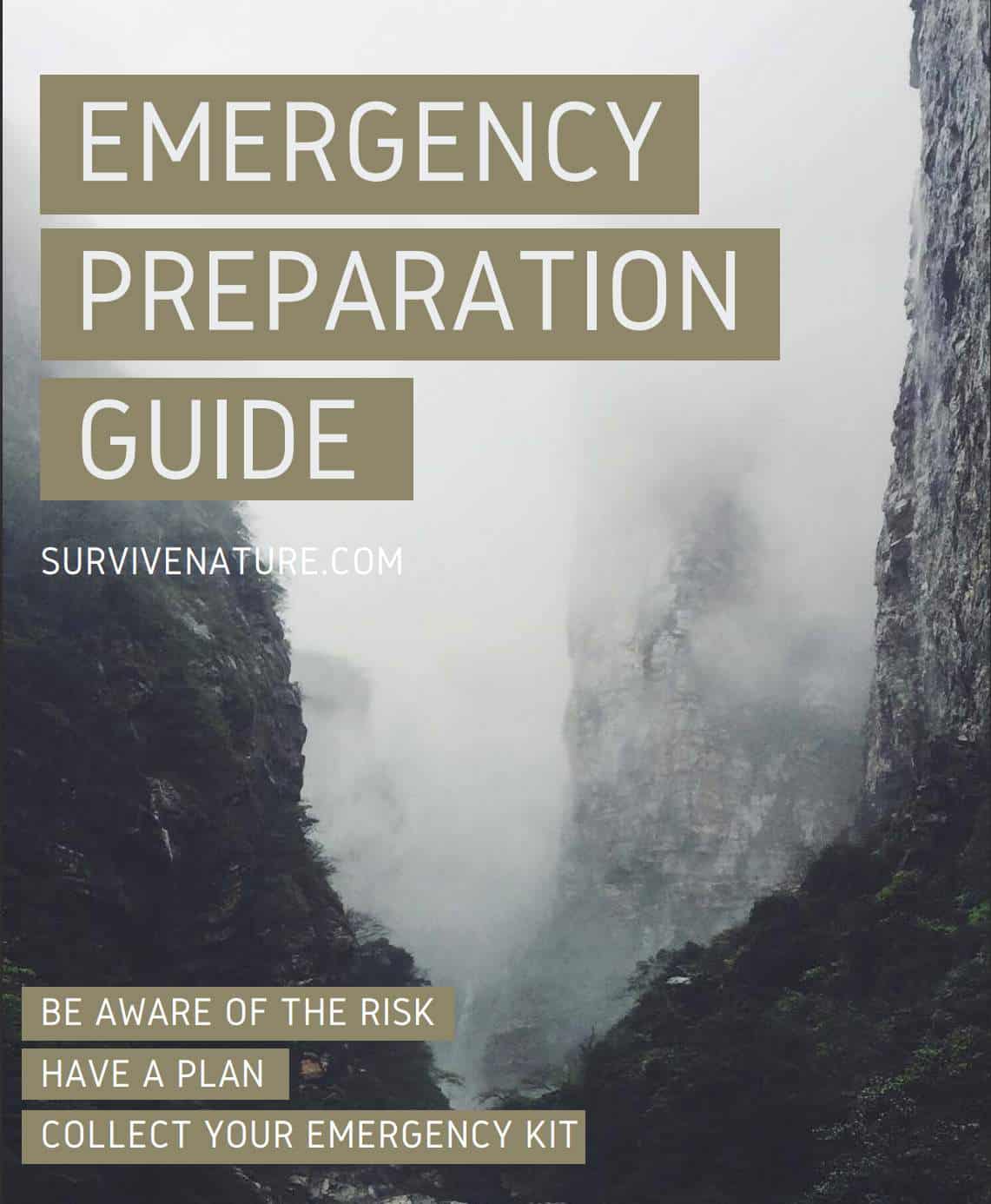“The weather outside is frightful,” says a line from the famous “Let It Snow” song, and it can be frightful indeed. Especially when you’re out there caught in a blizzard on foot, or trapped in your car by a furious winter storm, or your house is buried in snow that won’t stop. What to do in these situations to survive? Read these useful tips below on how to survive a blizzard.
A Blizzard is
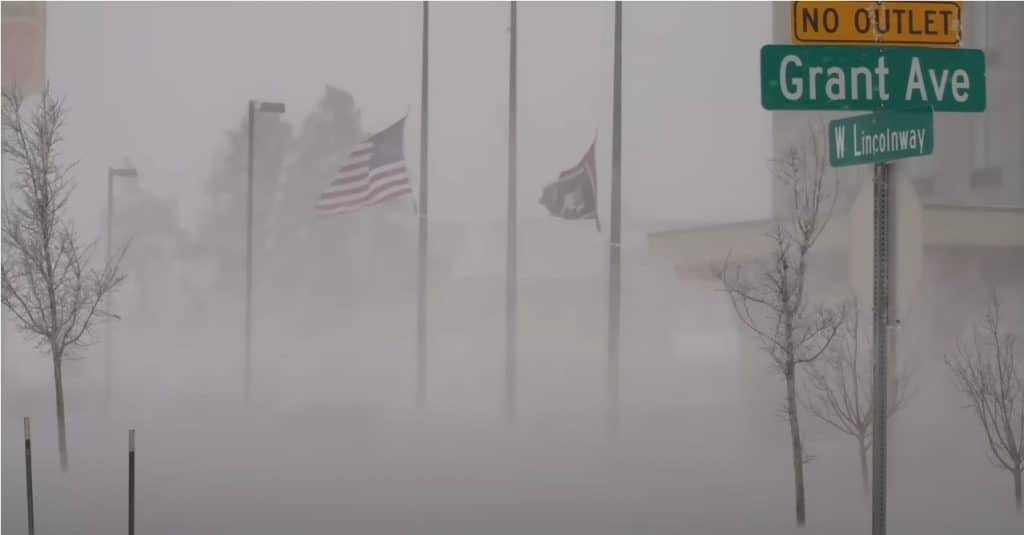
A blizzard is a fierce snowstorm, during which winds can blow at speeds more than thirty miles an hour. These storms can last for very long periods – three or even more hours. Heavy snowfall makes visibility degradingly poor, which adds to freezing cold winds. However, not every blizzard features snowfall. During such winter storms, strong winds gather snow that already lies on the ground. This results in snowdrifts and whiteouts, a weather condition when cloud and snow affect the visibility drastically, so nothing except very dark objects can be seen. Whiteouts are rightfully considered extremely dangerous.
Knowing how to act during a blizzard under different circumstances could easily save your life. Make sure you finish this article, especially if you live in an area where blizzards are frequent.
“How I Hate Going Out in the Storm…”
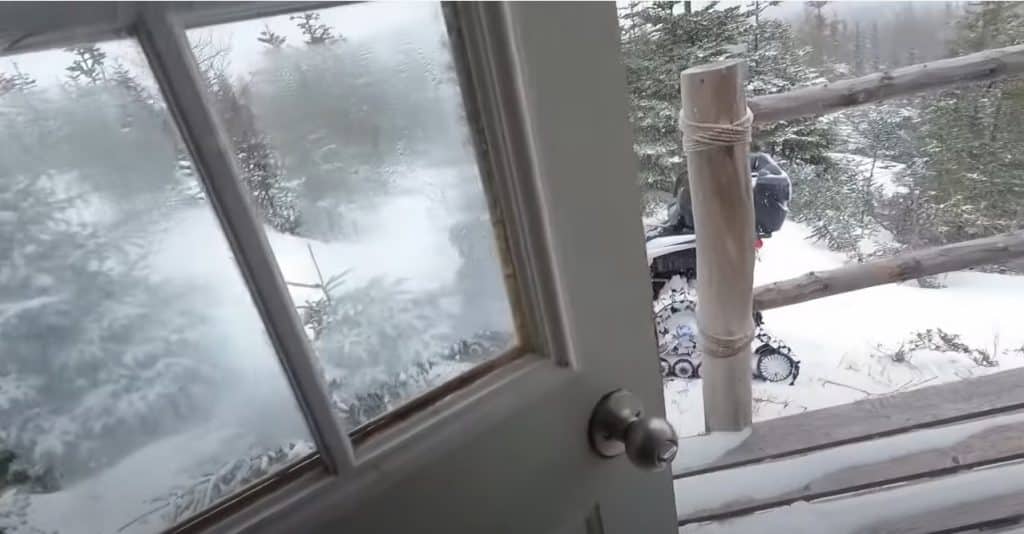
If you are an experienced hiker, you probably already know what to do. You are perfectly prepared and have all the needed equipment with you. If you are not, then read closely.
1. Seek Shelter Immediately!
Perfectly, your shelter must be a dry and warm place. But more often, such a place is a luxury, especially if you are caught in a winter storm in a wilderness. In this case, you must make shelter yourself. And there are two main options: a snow cave and a snow trench.
2. Digging a Snow Cave
- Your first step is to dig a tunnel. Be sure it slightly slopes upwards to the entrance.
- Then hollow out the cave. Make an arch-shaped roof. This is crucial because such a shape will not let your cave collapse.
- Now you are half-way through. What you might want to do next is make air-vents. Use a tree branch or a ski pole.
- Then gather more branches to barricade the entrance. This won’t let the wind blow into your shelter. Just don’t make the barricade too thick. It still must let enough air in so you won’t poison on carbon monoxide.
- While in your snow cave, you might want to make yourself comfortable. Use things like pine needles, moss, or grass if there is any, and pile some smaller branches to make yourself a bed.
3. Digging a Snow Trench
Another option to take cover from a snowstorm is a snow trench. This is your chance when there is not enough ground snow.
The principle is quite similar, though:
- Dig a trench in the snow;
- Gather tree branches and cover yourself with them.
While not as cozy and comfortable as a snow cave, a snow trench will still let you stay unexposed to high wind and snow.
4. Take some Gear
But there can be situations when even digging a snow trench is not an option because there is almost no snow on the ground.
In this case, you should create a make-shift lean-to using whatever materials you might find around you:
- Good thing if you have a rope and a tarp. Just run the rope between two trees and use a tarp as a wall to hide behind.
- If you don’t have anything useful with you, try finding a tree with low-hanging branches to hide under them. You might also want to weave them together with more branches to make your cover thicker.
But whatever option would be best for you at the moment, don’t go anywhere while the blizzard is raging. Stay put and arrange yourself a snow shelter. Because as soon as visibility decreases due to a whiteout, you won’t be able to find direction and might get lost. And more, harsh weather conditions will get you exhausted, and in the worst-case scenario, you might not survive.
Important to Note:
- If you manage to find a building where you can wait out the storm, try to find dry clothes there and get rid of your wet and cold clothes. Get yourself warm as soon as possible, and have yourself a hot drink if there is a possibility.
5. Make a heat source.
Building a fire is a great option that will help you keep warm. But fire needs special conditions like dry enough wood to start it and a sort of a barrier to prevent it from blowing out by the wind. But if you manage to build a fire, it will become a perfect heat source that will help you stay warm.
6. Stay hydrated.
And finally, staying hydrated is very important. Dehydration may cause headaches, muscle weakness, dizziness, lack of energy, and sleepiness. Those are the things you don’t want to experience while stranded in the wilderness during a freezing winter storm. If you lose too much energy and fall asleep, you may eventually die of hypothermia.
Here’s what you should do to stay hydrated:
- Try not to sweat a lot because when you sweat, you lose water.
- Drink regularly. If you don’t have water with you, then get it from snow by melting it.
- Don’t let your muscles stiffen. Do simple exercises now and then. But not too much. Remember not to break into a sweat.
- Keep your body warm with extra clothing.
7. Signal for Help if Needed.
If you think you might need help, wait until the snow stops and make a signal. It may be the word “HELP” spelled using stones or bright-colored clothing. Make sure your signal is large enough so the aerial rescue patrol could notice it.
But What If You ALREADY Have a Shelter?
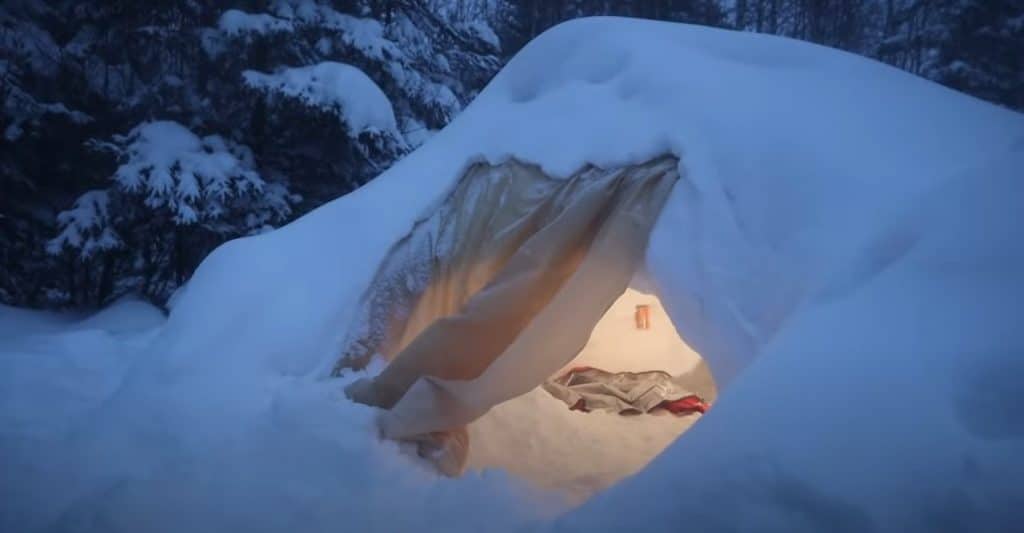
Now all you have to do is the following:
- Stay inside your tent;
- Seal all flaps and zippers;
- If you are not alone, keep warm by exchanging body heat with your partner. If you are alone, get inside your sleeping bag.
- To keep your core body temperature, eat food. But be rational. Don’t waste away all your supplies because you don’t know for how long you are trapped.
- If you hike with a camping stove, use it to warm-up your food and melt snow.
- Stay inside your tent until the storm is over.
Surviving a Blizzard Outdoors Checklist for Hikers:
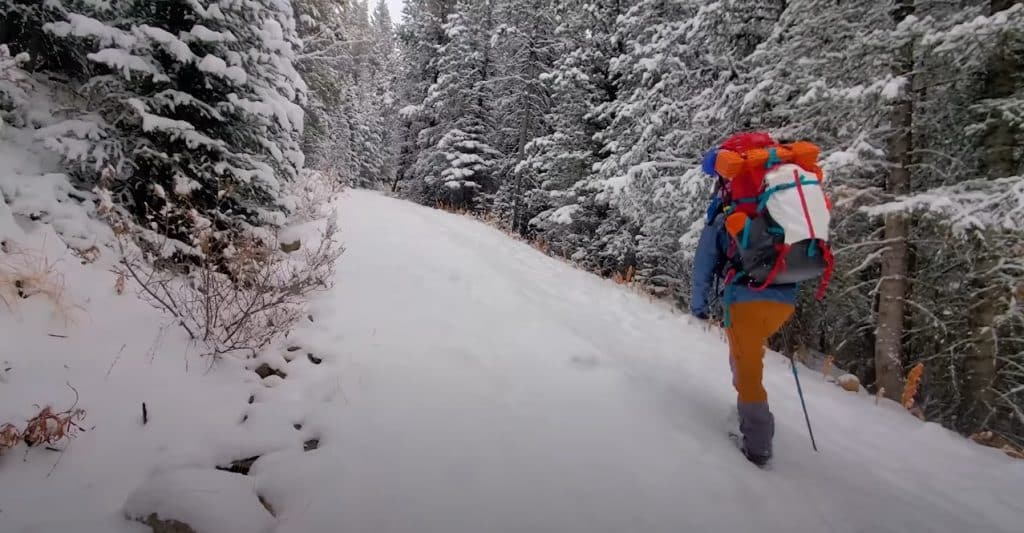
- Make sure to check the weather reports for snow and avalanche warnings;
- Avoid avalanche areas when hiking;
- Try not to hike alone;
- Be familiar with the trail;
- Always have extra food and drinking water supplies;
- Wear appropriate clothing;
- Have emergency equipment;
- Have a snow shovel? Take it. (It will be priceless when it comes down to digging a snow shelter);
- Be sure your tent is appropriate to use in winter conditions;
- Always take a sleeping bag with you;
- Have a camping stove and fuel for it;
- At all times, inform your friends and family about where you are going.
A Vehicle Blizzard Scenario
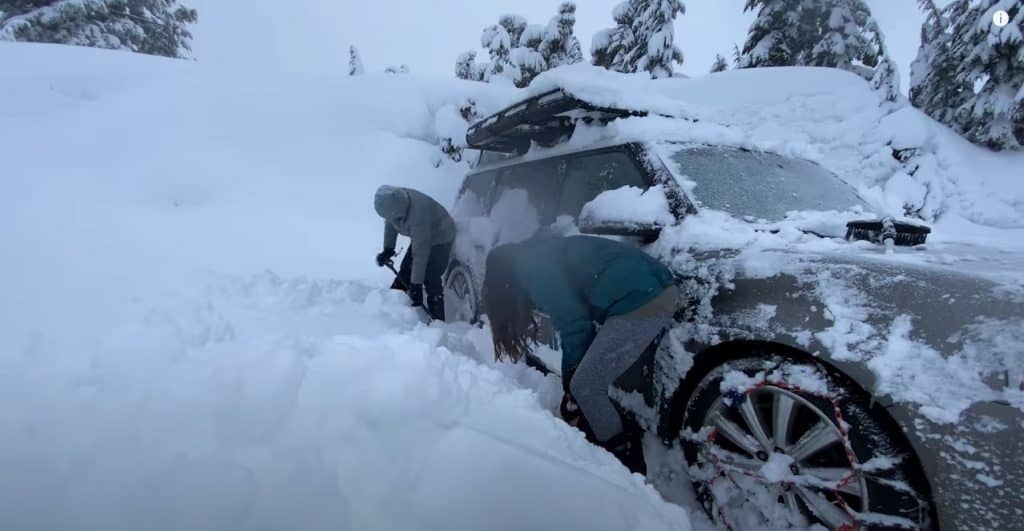
1. Get off the Road and Make Yourself Visible
The first thing you must do is to pull off the road and turn on the hazard lights so other drivers could notice you through the snow. A bright-colored piece of cloth is also a good way to make your car visible. Find as many bright-colored things in your car as possible and place them on your vehicle.
Quite often, the visibility drops to zero during winter storms. If this happens, honk now and then to alert others of yourself.
2. Don’t Leave your Vehicle!
Another thing you must remember is to always stay with your vehicle. If you need to move farther, trying to find help, make sure your car is still in a visible distance. Getting your car lost into a whiteout is not an option for you. Depending on the weather conditions, it may cost you your life.
- The only time you can leave your vehicle is if you notice a nearby building. You may look for shelter there.
3. Call for Help.
Good thing we live in the 21st century and everyone has a cell phone these days. So as soon as you are stuck in your car in the middle of snowy nowhere, call 911. Try to be as specific in details of your whereabouts and condition as possible. Answer all the questions an operator may ask you and follow all the instructions to survive the snowstorm.
If there is no answer from 911, call someone from your family or friends and ask them to reach emergency services for you.
- But remember: cold temperatures make cellphone batteries die quicker, so act rapidly and save time.
4. Keep Warm.
Now let’s remember about your top priority to stay warm. To do this:
- Start the engine every 10 minutes and turn on the heater to the full for 20 minutes max.
- Don’t forget to put some extra clothing on.
- Make sure you have enough fresh air to breathe. Carbon monoxide poisoning is a real threat in confined spaces. Every time you exhale, carbon monoxide will build up inside your car. This will result in drowsiness, and then before you know it, you are blacked out. To prevent this, keep one of the windows just slightly opened so the fresh air could get in. But not too much to prevent the heat loss.
- Exhaust fumes your vehicle produces are another danger. Snow can easily clog the exhaust pipe of your car, making fumes go back inside. To prevent this from happening, check the exhaust pipe now and then to make sure it’s clear.
5. Keep Moving.
Another thing you need to remember is that you must keep moving at all times. It is hard doing this in a vehicle, so you will have to get out of your car to perform simple exercises to keep your blood running and your muscles toned-up.
6. Don’t Starve.
Dehydration and hunger may worsen your condition, so the next thing to keep you active is food and water. Drink and eat in fairly small amounts regularly.
- If you don’t have bottled water, use snow. But do not eat it. It’s cold and will cause your body temperature to go down. Melt snow before consumption.
7. Don’t Panic.
And last but not least: think positively. As frightening as it can be, a blizzard cannot last forever. And if you follow all the instructions we’ve given you will be safe and sound.
- When you get stranded, your mind starts racing, and fear and panic set it. Your thoughts begin to picture negative scenes. Try to tame your desperate imagination and slow your thinking.
- Try to stay focused only on positive and productive ideas. Think of what you need to do at the moment to survive.
- Slow and deep breathing will help you to relax and fight anxiety.
- Make a survival plan for yourself: list the actions and things you need to stay safe.
- Get yourself busy and leave no room for useless thought and self-pity.
- Get creative. Be ready to adapt when a situation changes quickly.
- Stay strong, no matter what, and do everything it takes to survive. Be ready to tolerate discomfort and other difficulties, and remember that they are not forever.
Driver’s Emergency Kit Checklist
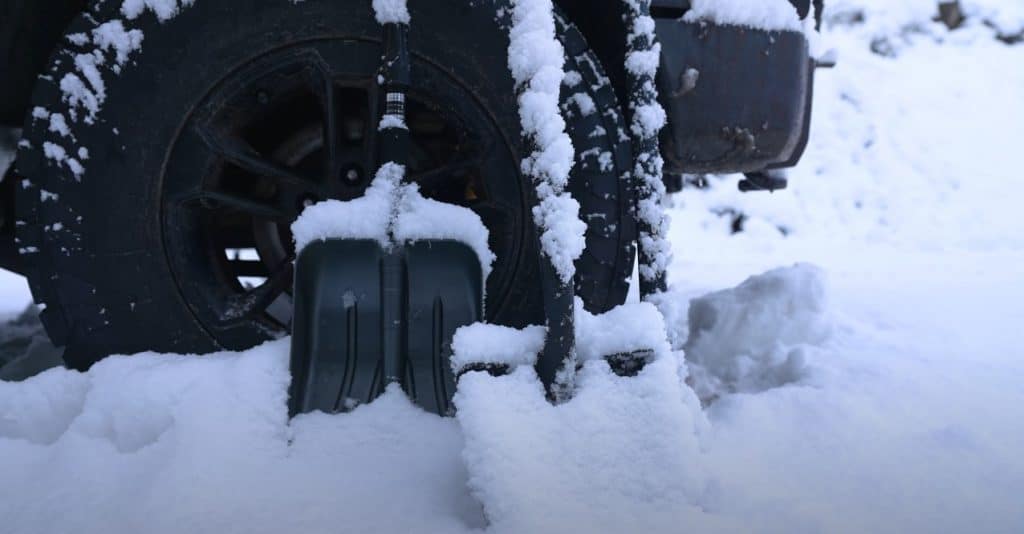
- Make sure your car fits winter conditions:
- Always have an extra canister of fuel;
- Prepare snow tires and tire chains for a better grip on winter roads;
- Have a snow shovel, a blanket, and extra clothing in the back of the car;
- At all times, keep snacks and flasks of freshwater;
- Have a first aid kit and a flashlight;
- Always keep your cell phone fully charged when you travel.
Your Home is Your Castle
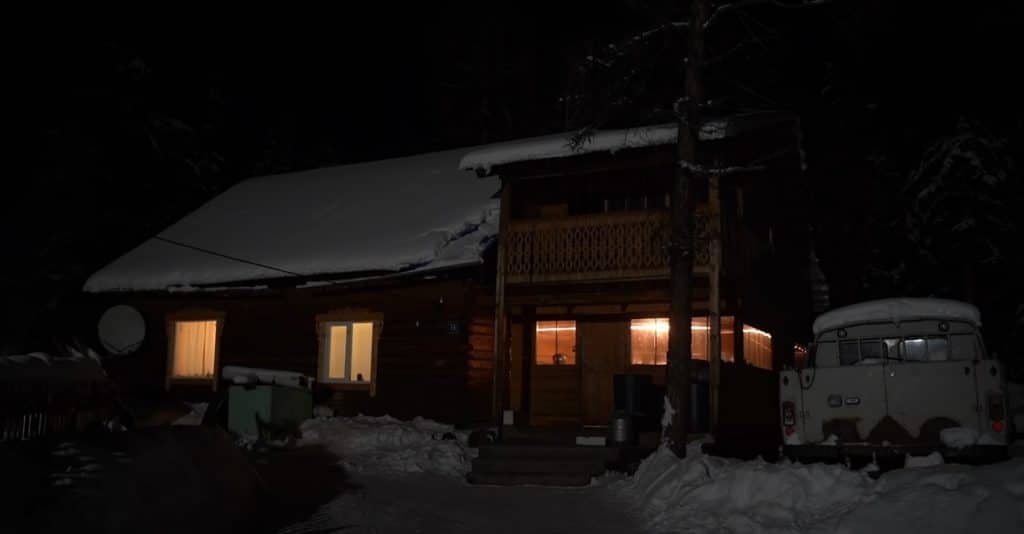
Waiting out the snowstorm at home is undoubtedly the best of scenarios. But even in this case, there are many things you must consider and prepare to make your home a solid shelter where cold weather is no longer a threat.
1. Keep your house warm.
First of all, you must ensure you will not have problems with the lack of heat at your home. Thus preparing a heating source is your number one priority.
- If your house has a fireplace, make sure it is in full operating condition and prepare enough firewood for it. So you can use your fireplace as an emergency heat source in case central heating breaks down.
- Another way to heat your house is by using kerosene heaters.
A fuel generator is another device that might be handy in case of a power cut. But keep in mind that you must not run a generator indoors. If you do, carbon monoxide will build up quickly, causing carbon monoxide poisoning and death.
- Using a fireplace, a kerosene heater, or a fuel generator increases the risks of fire. Have a fire extinguisher at hand and check your home’s smoke alarm system.
One more tip is to prevent water pipes from freezing. The indoor pipes are fairly safe if you keep the house warm. The main problem is the outdoor pipes. To prevent them from freezing, you will have to consider insulating them.
2. Stay Together.
It is also best to stay all in one room to keep each other warm exchanging body heat. You should also prepare sleeping bags and keep extra clothing at hand.
- Suppose you have pets. Keep an eye on them and remember that they also need to be protected from cold. Keep them close to you and prepare warm clothing for them if necessary.
3. Have enough supplies.
Prepare emergency supplies of food and water. Be sure you have enough extra batteries and fully charged power banks for your mobile devices and laptops. If anything happens, you might want to have the possibility to call for help.
4. Stay informed.
Tune to local television and radio broadcasts to be informed of the latest news and instructions. Emergency broadcasts will let you know how long a blizzard can last, how to stay safe and ration your supplies. You can also check for online news updates but don’t do it too often – save your cell phone’s battery.
5. Don’t leave your house.
Stay inside and do not leave your home unless there is an urgent situation. A blizzard could have ripped down power lines, and you may not notice them in a whiteout.
- You may go outside only to check a generator, see if there is any damage to your house, get more firewood, or seek medical help for someone in your family.
Waiting Out the Storm Checklist
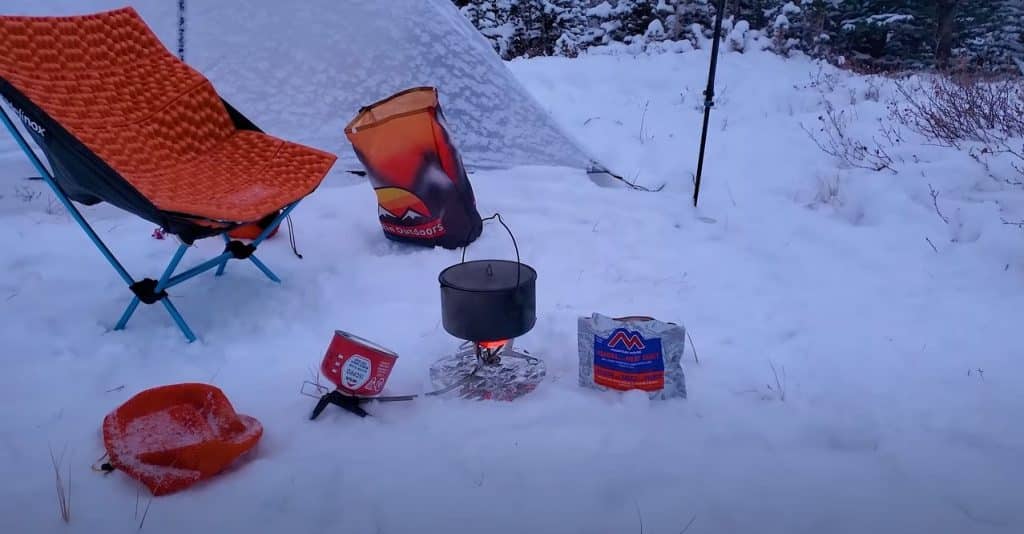
- Fill up water bottles and prepare food supplies;
- Prepare a reliable heat source;
- Prepare firewood if you have a fireplace;
- Have warm clothing, blankets, and sleeping bags;
- Have a first aid kit for health conditions and injuries;
- Prepare extra batteries for cell phones, laptops, and other home devices;
- Insulate water pipes;
- Have a fully charged portable radio to check the news;
- Have a generator in case of power shutdown.
Conclusion
During wintertime, weather can change dramatically fast, and blizzards can turn winter wonderland into a freezing hell in just a matter of minutes. People freeze to death, getting lost in whiteouts or stuck in their cars along frostbitten highways. Even homes are not always the safest places. But now you know how to survive a severe snowstorm no matter where you are, and maybe one day, this information will save your life.


